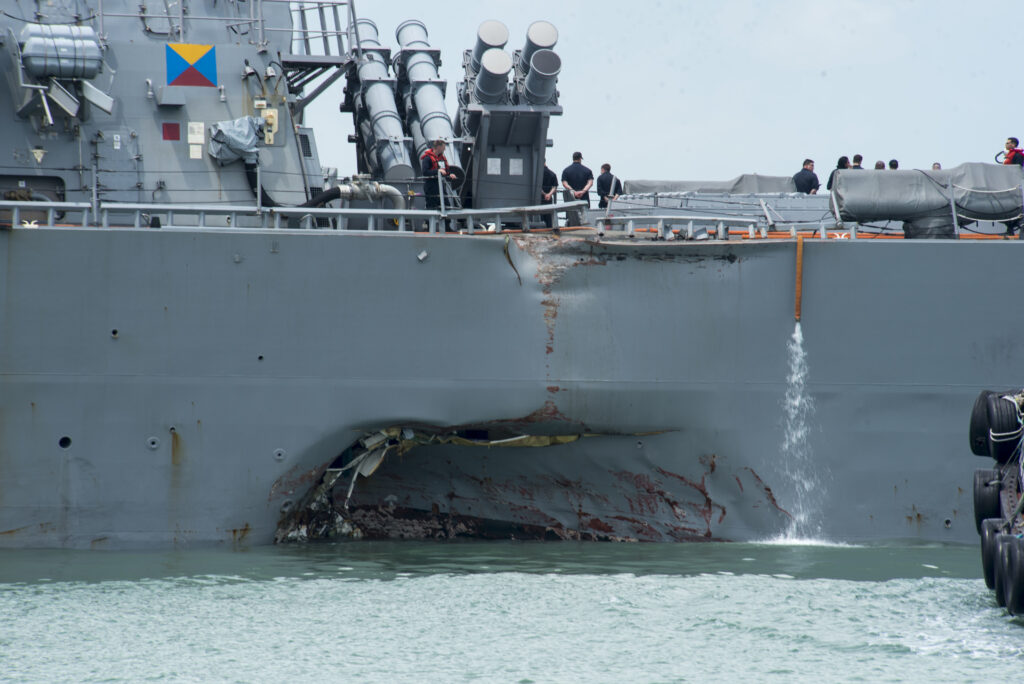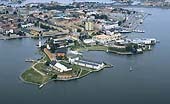WASHINGTON: Lookouts were looking in the wrong direction on the USS Fitzgerald. The bridge crew – including the commander – didn’t know how the helm worked on the USS McCain. The collisions that killed 17 sailors this summer were “preventable” lapses in basic seamanship, the Chief of Naval Operations admitted today, as he ordered a host of measures to prevent a repeat.
It’s not just 7th Fleet’s problem, Adm. John Richardson emphasized: It’s the Navy’s.
“Now that we have that investigation complete (into 7th Fleet),” Richardson said, “I just transmitted a message to all commanding officers….for them to study this at all levels of command to figure out and determine where they might be vulnerable (and) what of the recommended actions might be applicable to them.”
But, Richardson warned, a culture of shortcuts arose in the first place because Japan-based 7th Fleet, and the Navy as a whole, are under intense pressure to get ships out to sea and keep them there. Ultimately, he said, the only way to meet the demand is to build more ships.
“The Navy’s been run hard in the past 16 years of war and the pace is picking up, especially in the Pacific,” Richardson said at a Pentagon press briefing. “Rising pressure to meet operational demands led those in command to rationalize declining standards (and) a reduction of operational safety margins.”
Like the proverbial frog in the pot of hot water, not knowing it is slowly boiling to death, 7th Fleet leadership didn’t realize all their short-term expedients added up to long-term disaster.
After USS Antietam ran aground in January, for instance, some crewmembers still needed to get time at-sea for their training and certifications, so they were transferred to the McCain. “This is not unusual,” said Richardson, but in this case, no one made sure the crewmembers from Antietam, a cruiser, were properly trained to operate the somewhat different equipment on the McCain, a destroyer. “A couple” of those ex-Antietam sailors were on the McCain‘s bridge at the time of the collision.
 |
| The USS McCain heads for Shanghai after a collision that killed 10 sailors. |
That said, no one else on the McCain’s bridge seemed to know what they were doing, either, including the ship’s commander. When they belatedly realized a current was pushing them onto a collision course with oncoming ship traffic, they tried to adjust the steering system – reconfiguring it five times in the three minutes before impact. Instead of correcting course, they lost control of the ship.
One mistake on the Fitzgerald was even more basic. The ship had posted look-outs as it went through busy sea lanes, but they were only looking left (port). No one was watching the ship’s right (starboard) side – which of course is where it was hit.
“These were fundamental mistakes of ship driving,” Richardson said, definitively ruling out speculation about a cyber attack. “These ships in the 7th Fleet had not mastered the fundamentals – and we noticed some issues at headquarters that may have set them up for that.”
Adm. Phil Davidson‘s team of 34 sailors and civilians studied both accidents and “other mishaps going back 10 years,” said Richardson, to come up with a battery of recommendations. Some are simple: warships will now routinely turn on their AIS (Automatic Identification Systems) beacons, sending their positions to nearby vessels. Some are easy to explain but not to implement: sailors must now be allowed to sleep at least six hours in every 24. Some are complex: a new, more deliberate work schedule for 7th Fleet; a new independent readiness body; a “near miss” program to investigate almost-accidents and disseminate lessons-learned; and a more rigorous process of readiness assessments.
“A big conclusion of the comprehensive review is we’ve got to beef up the assessment process across the board, both individual and team,” Richardson said. “While we did focus on this area in the 7th Fleet, there’re assessments of readinessgoing on throughout the Navy.”
Ultimately, however, part of the solution is in Congress’s hands. “There’s a mismatch between the sustainable level of naval power that we can generate with the current assigned forces in the 7th fleet and the mission set, the growing mission set,” Richardson said. “That gap can only be met by additional naval forces — more ships.”

